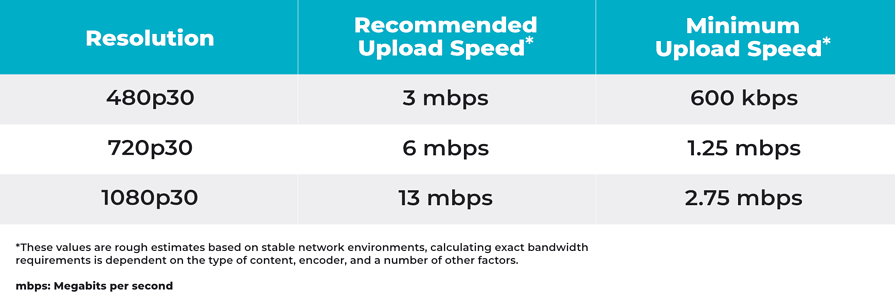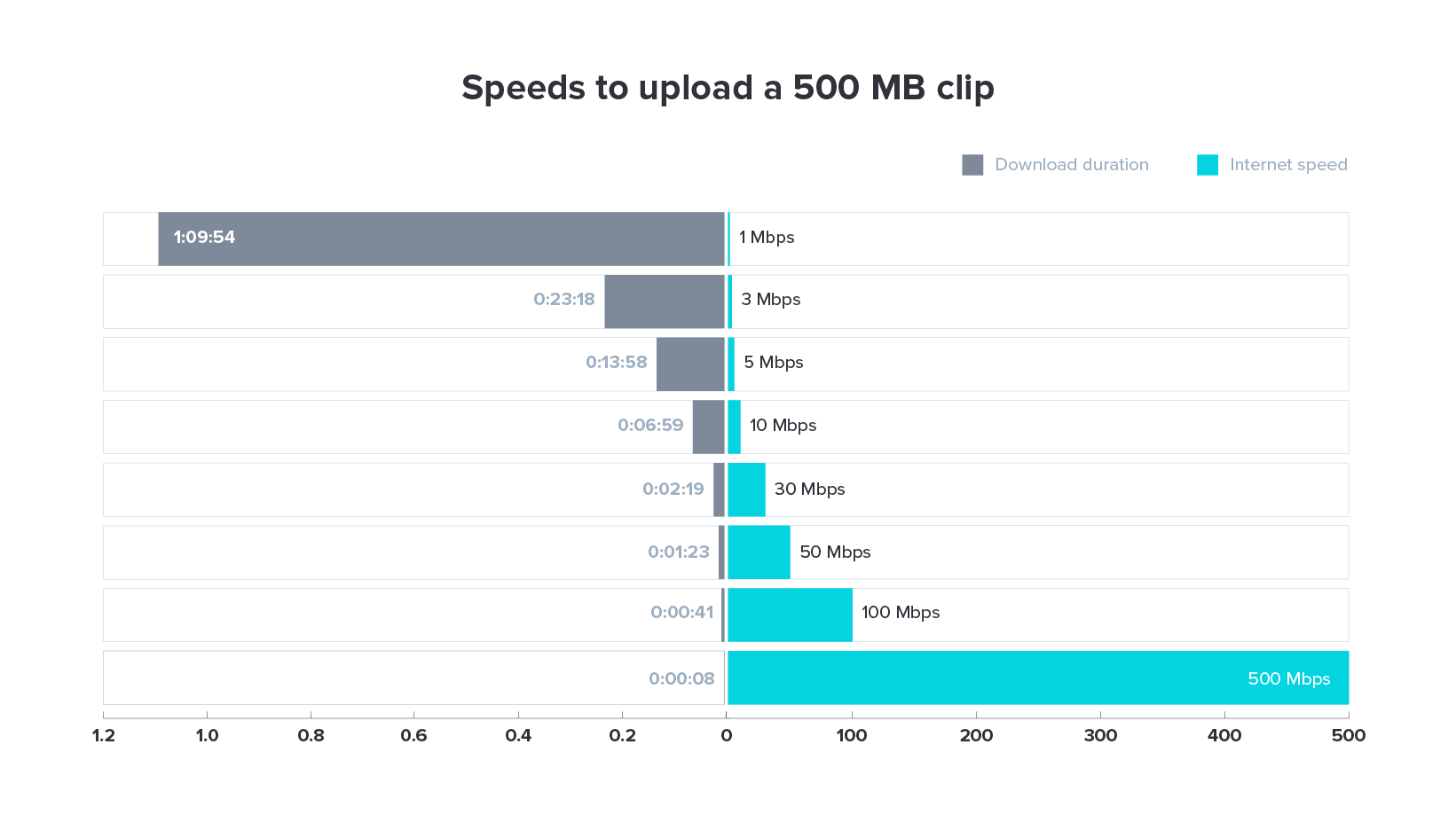How Megabits Per Second Impact Your Online Activities
The idea of megabits per second (Mbps) plays an essential role in forming our on the internet experiences. Greater Mbps can enhance performance and minimize interruptions, while poor speeds might promote frustration and ineffectiveness.
Understanding Megabits Per Second
When taking into consideration web rate, it's necessary to recognize the idea of megabits per second (Mbps), which acts as a common measurement for data transfer prices. This metric measures just how much data can be transferred over a net connection in one second, giving a clear understanding of performance abilities - Megabits Per Second. For context, one megabit amounts to one million bits, and Mbps is frequently made use of to express data transfer for numerous online activities
A higher Mbps shows a faster internet connection, allowing individuals to execute tasks such as downloading data, browsing sites, and participating in on-line gaming much more effectively. Normal surfing calls for around 1-5 Mbps, while streaming high-definition video may demand 5-25 Mbps. Understanding these demands is vital for establishing the appropriate internet speed needed for specific activities.
Additionally, the number of devices connected to a network can impact overall performance. Multiple users streaming, gaming, or downloading and install simultaneously can stress readily available bandwidth, resulting in slower rates - Megabits Per Second. Reviewing individual online behaviors and needs is crucial in choosing a web plan that aligns with one's demands, making certain a smooth electronic experience
Streaming and Buffering Issues
Streaming high-definition content has actually come to be a staple of contemporary on the internet enjoyment, yet it is typically accompanied by frustrating buffering concerns. These disruptions can substantially interfere with the seeing experience, leading to frustration and prospective loss of audience involvement. Buffering takes place when the data transmitted from the streaming solution is not received promptly sufficient to maintain a smooth playback, usually because of insufficient net speed measured in megabits per second (Mbps)

Moreover, real-time streaming can be influenced by network blockage, which happens when multiple devices share the very same transmission capacity. Maximizing link speed and ensuring ample Mbps is necessary for a seamless streaming experience. As streaming services remain to develop, recognizing the influence of Mbps on buffering issues continues to be important for consumers looking for undisturbed home entertainment.
Online Pc Gaming Performance
The impact of web speed on on-line tasks prolongs beyond streaming, dramatically influencing on-line video gaming efficiency. In competitive pc gaming, low latency and high transmission capacity are essential for a smooth experience. A fast link minimizes lag, enabling gamers to react promptly to in-game events, which can be the distinction between success and loss.
Data transfer, gauged in megabits per second (Mbps), plays an essential function in sustaining multiple gadgets useful site and gaming systems at the same time. Inadequate transmission capacity can bring about dropped links or lowered game top quality, negatively affecting gameplay. On-line multiplayer video games require substantial data transfer, specifically throughout peak gaming hours when various players are online.
Fast-paced first-person shooters demand greater rates to maintain responsiveness, while turn-based strategy video games might work reasonably well on reduced rates. As on the internet video gaming continues to advance, with raising visual fidelity and even more complicated multiplayer environments, the demand for greater Mbps will only magnify.
Video Conferencing Top Quality
In today's digital landscape, video conferencing top quality is heavily influenced by net rate, particularly in regards to data transfer and latency. High-grade video clip calls require enough data transfer to send audio and video clip information perfectly. Usually, a minimum of 1.5 Mbps upload and download speeds is suggested for typical interpretation video, while high-definition video clip conferencing normally requires a minimum of 3 Mbps.
Latency, or the hold-up between sending out and receiving data, additionally plays a crucial duty in the user experience. Reduced latency guarantees that discussions flow naturally without unpleasant stops briefly or disturbances. Ideally, latency must be listed below 150 milliseconds for efficient interaction. Higher latency can lead to resemble, lag, and disjointed interactions, which can prevent collaboration and interaction throughout conferences.
In addition, multiple participants in a video seminar can stress readily available bandwidth, requiring also greater rates. Network congestion, typically triggered by synchronised tasks like streaming or downloading, can further deteriorate video high quality. Therefore, for companies depending on video clip conferencing for remote cooperation, recognizing the relationship in between megabits per second and overall interaction top quality is essential for maintaining productivity and enhancing virtual interactions.
Choosing the Right Internet Plan
Selecting an appropriate internet plan is crucial for guaranteeing optimal performance in numerous on-line tasks, specifically in setups that require high bandwidth, such as video conferencing and online video gaming. Megabits Per Second. When thinking about a web plan, it is necessary to assess both the speed and data allocation to match your certain use requirements
For homes with multiple customers involving in synchronised activities, a plan supplying greater megabits per second (Mbps) is suggested. Normally, a minimum of 25 Mbps is appropriate for common streaming and surfing, while plans exceeding 100 Mbps are preferable for even more extensive tasks. Additionally, consider the nature of your online activities; video clip conferencing needs at the very least 1.5 Mbps submit speed, while on-line video gaming may require a lower latency but regular connection.
It is also essential to examine your data cap. Endless data strategies can avoid strangling and disruptions, specifically if heavy use is anticipated. Last but not least, research provider in your location, as availability and rates can vary. By thoughtfully choosing an internet plan customized to your demands, you can boost your on the internet experience, ensuring smooth, undisturbed access to your favored tasks.
Conclusion
In verdict, the importance of megabits per second (Mbps) in forming online tasks can not be overstated. A thorough understanding of specific or home Mbps needs is crucial for choosing an appropriate net plan that adequately sustains diverse online tasks and user needs.

Commonly, a minimum of 25 Mbps is ideal for common streaming and surfing, while plans exceeding 100 Mbps are preferable for even more extensive tasks. Additionally, take into consideration the nature check out this site of your online tasks; video conferencing requires at the very least 1.5 Mbps publish speed, while online pc gaming might need a reduced latency however consistent link.